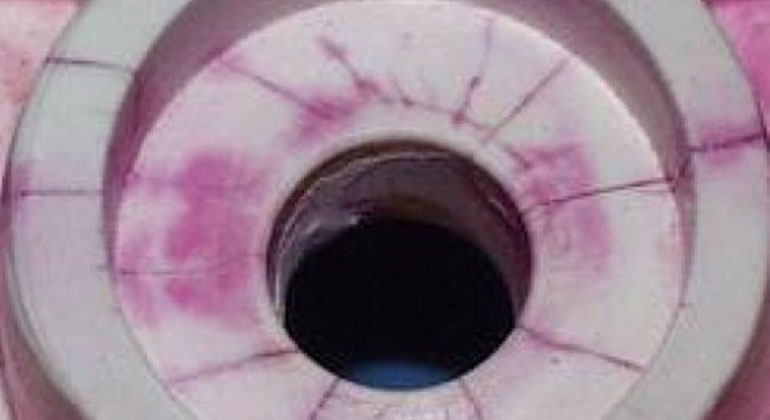
This method is used to find surface defects, not limited to ferrous materials. Do not require any power source, is highly portable and an efficient method. It is generally used where MPT cannot be applied – i.e. where the material is non-ferrous.
What we do
Our Qualified Technicians are specialized in Liquid Penetrant Testing on:
- New Fabricated Welding, Casting & Forgings for any external/surface indications according to applicable specifications and standards
- In-service testing for Fatigue Cracks & Surface Breaking Flaws on Welds, Pins, Bolts and Shafts
Our service system
Penetrant Classification System:
- Type 1: Fluorescent Dye
- Type 2: Visible (Red) Dye
- Method A: Water Washable
- Method B: Post Emulsifiable, lipophilic (oil base)
- Method C: Solvent
Our commitment
Is always to provide a precise and thorough inspection according to the Client’s requirements and needs.
Most Popular Questions
What is the principle of liquid penetrant testing?
The principle of Liquid Penetrant Testing is that the liquid penetrant is drawn into the surface-breaking crack, by capillary action and excess surface penetrant is then removed; a developer (typically a dry powder) is then applied to the surface, to draw out the penetrant in the crack, which produce a surface indication.
Which type of penetrant is most sensitive?
Fluorescent Penetrant systems are more sensitive than visible penetrant systems, because the eye is drawn to the glow of the Fluorescing Indication.
Which type of developer is considered the most sensitive?
Non-aqueous developers are generally recognized as the most sensitive when properly applied. There is less agreement on the performance of dry and aqueous wet developers, although the aqueous developers are usually considered more sensitive.
Benefits of working with us
Based on experience, we will always attempt to find an acceptable solution for any unconventional circumstance or requirements for our Clientele.
Our Brochure
Our full Company Profile and Service Delivery, can also be viewed in our Brochure.
Download PDF









